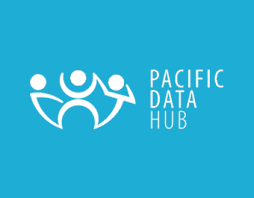Questionnaire
The 1996 Papua New Guinea household survey is designed to measure the living standards of a random sample of PNG households. As well as looking at the purchases, own-production, gift giving/receiving and sales activities of households over a short period (usually 14 days), the survey also collects information on education, health, nutrition, housing conditions and agricultural activities. The survey also collects information on community level access to services for education, health, transport and communication, and on the price levels in each community so that the cost of living can be measured.
There are many uses of the data that the survey collects, but one main aim is for the results to help government, aid agencies and donors have a better picture of living conditions in all areas of PNG so that they can develop policies and projects that help to alleviate poverty. In addition, the survey will provide a socio-economic profile of Papua New Guinea, describing the access that the population has to agricultural, educational, health and transportation services, their participation in various economic activities, and household consumption patterns.
The survey is nationwide and the same questionnaire is being used in all parts of the country, including the urban areas. This fact can be pointed out if households find that some of the questions are irrelevant for their own living circumstances: there are at least some Papua New Guinean households for which the questions will be relevant and it is only by asking everyone the same questions that living standards can be compared.
The 1996 Papua New Guinea Household Survey covered the following topics:
Household questionnaire:
- Section 1. Household Roster
- Section 2. Education
- Section 3. Income Sources
- Section 4. Health
- Section 5. Foods in the Diet
- Section 6. Housing Conditions
- Section 7. Agricultural Assets, Inputs and Services
- Section 8. Anthropometrics
- Section 9. Household Stocks
Consumption recall:
- Section 1. Purchases of Food
- Section 2. Other Frequent Purchases
- Section 3. Own-production of Food
- Section 4. Gifts Received: Food and Frequent Purchases (START)
- Section 5. Annual Expenses and Gifts
- Section 6. Inventory of Durable Goods
- Section 7. Inward Transfers of Money
- Section 8. Outward Transfers of Money
- Section 9. Prices
- Section 10. Repeat of Anthropometric Measurements
- Section 11. Quality of Life
Community Questionnaire:
- Section A. Listing of Community Assets
- Section B. Education
- Section C. Health
- Section D. Town or Government Station
- Section E: Transport and Communications
- Section F. Prices
- Section G. Changes in Economic Activity, Infrastructure, and Services
* Collection start: 1996
* Collection end: 1996
Data and Resource
| Field | Value |
|---|---|
| Publisher | Pacific Data Hub |
| Modified | 29 November 2022 |
| Release Date | 01 April 2019 |
| Source URL | https://pacificdata.org/data/dataset/0684f5ae-ccce-4588-87c4-46af1f8c79cf |
| Identifier | 0684f5ae-ccce-4588-87c4-46af1f8c79cf |
| Spatial / Geographical Coverage Location | Array |
| Relevant Countries | Papua New Guinea |
| License |
Public
![[Open Data]](https://assets.okfn.org/images/ok_buttons/od_80x15_blue.png)
|
| Author | Array |
